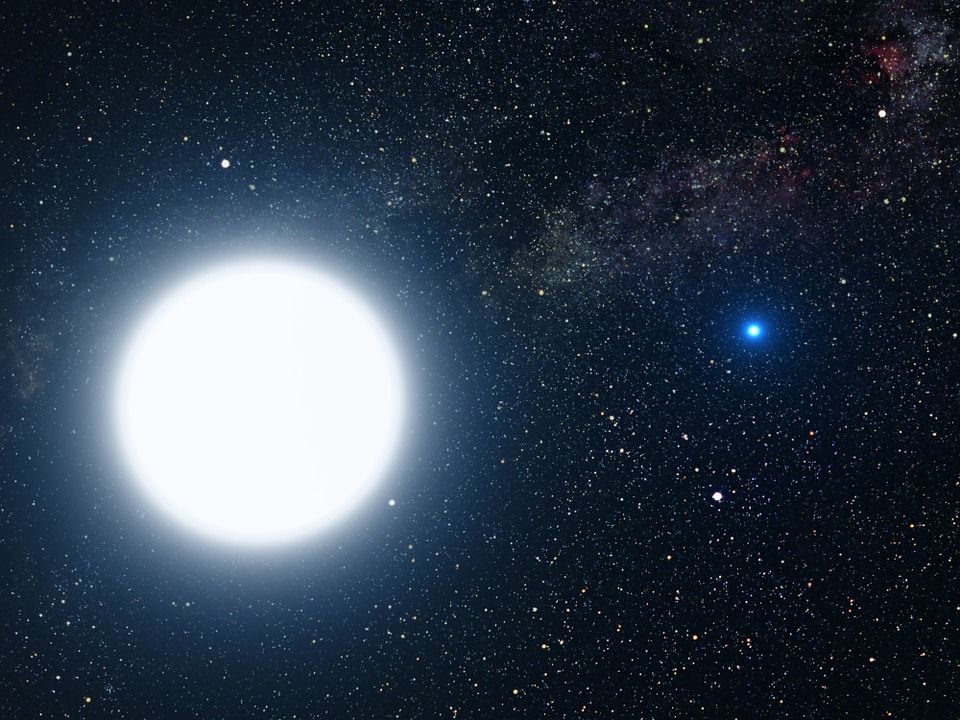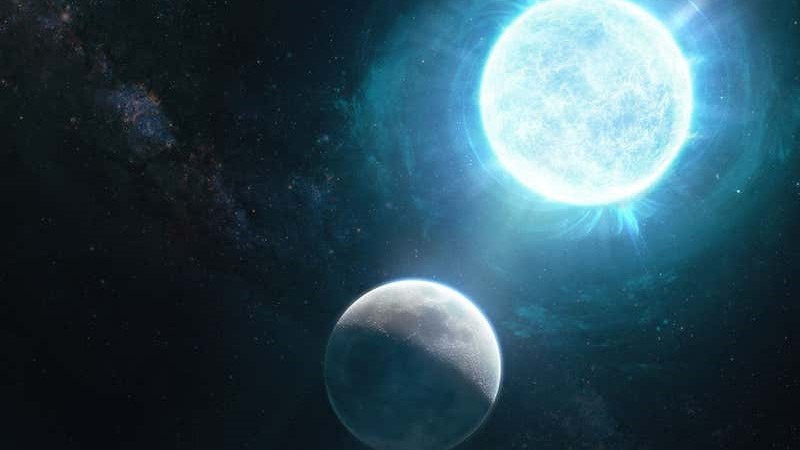Scientists have found a star near us that turns into a diamond the size of the Earth – the same thing will happen to the Sun and 97% of the Milky Way’s stars
Have you ever wondered what happens to stars when they die? Most of them end up as white dwarfs, which are the cooled and collapsed remnants of sun-like stars. But some of these white dwarfs have a special fate: they turn into giant diamonds in space.
This is not a science fiction story, but a real phenomenon that scientists have observed and explained. In this article, we will explore how and why some stars become cosmic jewels, and what this means for our own star, the Sun.

How do stars turn into diamonds?
Stars are powered by nuclear fusion, which is the process of combining lighter elements into heavier ones, releasing energy in the process. The Sun, for example, fuses hydrogen into helium in its core. This energy keeps the star shining and prevents it from collapsing under its own gravity.
But stars have a limited amount of fuel, and eventually they run out of hydrogen to fuse. When this happens, they start to fuse helium into carbon and oxygen, and then carbon and oxygen into heavier elements like iron. This makes the star expand into a red giant, which can engulf nearby planets like Mercury and Venus.
The final stage of a star’s life depends on its mass. Very massive stars explode as supernovas, leaving behind neutron stars or black holes. Less massive stars like the Sun shed their outer layers as planetary nebulae, exposing their hot cores as white dwarfs.
A white dwarf is about the size of the Earth, but has the mass of the Sun. It is extremely dense and hot, but it has no fusion reactions to sustain it. It slowly cools down over billions of years, radiating its heat into space.

But not all white dwarfs are alike. Some have cores made mostly of carbon and oxygen, while others have cores made mostly of metallic oxygen (oxygen with extra electrons). The difference depends on how much mass the star had before it became a white dwarf.
The more massive the star, the more pressure and temperature it had in its core, and the more fusion reactions it could sustain. This means that more massive stars can fuse carbon and oxygen into heavier elements like iron, leaving behind white dwarfs with metallic oxygen cores.
But less massive stars cannot fuse carbon and oxygen further, leaving behind white dwarfs with carbon-oxygen cores. These are the ones that can turn into diamonds.
The reason is that carbon can crystallize under high pressure and low temperature, forming a solid lattice of atoms. This is how diamonds are formed on Earth, but also in space. When a white dwarf with a carbon-oxygen core is very old and cold, its carbon atoms can arrange themselves into a crystal structure, forming a huge diamond in space.
This process is very slow, though. Scientists estimate that it would take about one quadrillion years (a thousand trillions) for a white dwarf to fully crystallize. That is much longer than the age of the universe, which is about 13.6 billion years. So far, no star has become a complete diamond yet.
But some stars are closer to this transition than others. Scientists have detected some ancient and dim white dwarfs that are effectively Earth-sized diamonds. They are so faint that they are hard to spot, but they can be identified by their low temperature and high metallicity (the amount of elements heavier than helium).
One example is BPM 37093, also known as Lucy (after the Beatles song “Lucy in the Sky with Diamonds”). It is located about 50 light-years away from Earth in the constellation Centaurus. It has a mass similar to the Sun, but a diameter of only 4,000 kilometers (2,500 miles). It has a temperature of about 4,000 degrees Celsius (7,200 degrees Fahrenheit), which is much cooler than most white dwarfs. It also has a very high metallicity, indicating that it has a lot of carbon in its core.
Scientists estimate that Lucy is about 87% crystallized, meaning that most of its carbon atoms have formed a diamond structure. Its total mass of crystallized carbon is about five million trillion trillion carats (a carat is 0.2 grams). That is equivalent to 10 billion times the mass of all the diamonds mined on Earth so far.
How common are diamond stars?

Lucy is not alone in its sparkling fate. Scientists have found many other white dwarfs that are partially or fully crystallized. In fact, they estimate that about 97% of all the stars in the Milky Way will end up as white dwarfs, and most of them will have carbon-oxygen cores that can crystallize.
This means that the majority of the stars in our galaxy, including the Sun, will eventually become giant diamonds in space. This will happen long after they have exhausted their fuel and shed their outer layers, leaving behind their dense and dim cores.
But this process will take a very long time. The Sun is about 4.6 billion years old, and it has enough hydrogen to fuse for another 5 billion years. After that, it will expand into a red giant, and then shrink into a white dwarf. It will take another 10 billion years for the white dwarf to cool down enough to start crystallizing. And it will take another quadrillion years for the white dwarf to fully crystallize.
By then, the universe will be a very different place. Most of the stars will have died, leaving behind cold and dark remnants. The galaxies will have drifted apart, making the sky almost empty. The expansion of the universe will have stretched the light from distant sources, making them invisible. The only sources of light and heat will be the faint glow of the white dwarfs, some of which will sparkle like diamonds.
Why do diamond stars matter?
You might wonder why we should care about something that will happen so far in the future, when we won’t be around to see it. But studying diamond stars can tell us a lot about the past and present of the universe, as well as its future.
Diamond stars are like cosmic fossils that preserve information about the history and evolution of stars. By measuring their temperature, brightness, mass, composition and age, we can learn how they formed, how they changed over time, and how they influenced their surroundings.
For example, by comparing the ages of white dwarfs with those of their companion stars or planets, we can test our models of stellar evolution and planetary formation. By measuring the metallicity of white dwarfs, we can trace the chemical enrichment of the galaxy by successive generations of stars. By detecting the gravitational waves emitted by binary white dwarfs, we can probe the nature of gravity and space-time.
Diamond stars also have implications for life in the universe. White dwarfs are stable and long-lived sources of energy that could support life on planets orbiting them. Some scientists have speculated that life could evolve on such planets after the main-sequence star has died and become a white dwarf. Others have suggested that advanced civilizations could use white dwarfs as energy sources or even as computers.
But diamond stars also pose a challenge for life in the universe. As they cool down and crystallize, they become less luminous and less hospitable for life. Eventually, they will become so cold and dark that they will be virtually undetectable. This means that life in the far future will have to cope with a very dim and lonely universe.
Conclusion
Diamond stars are a fascinating phenomenon that reveals the beauty and complexity of nature. They are also a reminder of our place in the cosmic scheme of things. We live in a dynamic and evolving universe, where stars are 𝐛𝐨𝐫𝐧, live and die, leaving behind their traces in various forms. Some of these forms are dazzling and precious, like diamonds. But they are also ephemeral and transient, like everything else.





